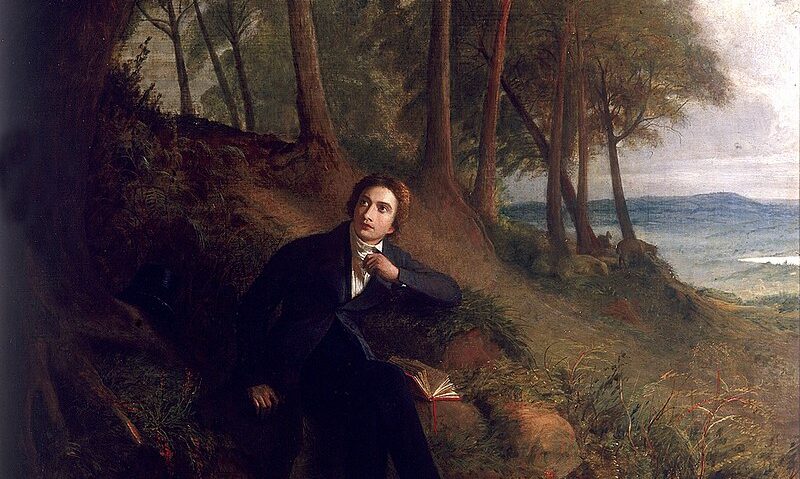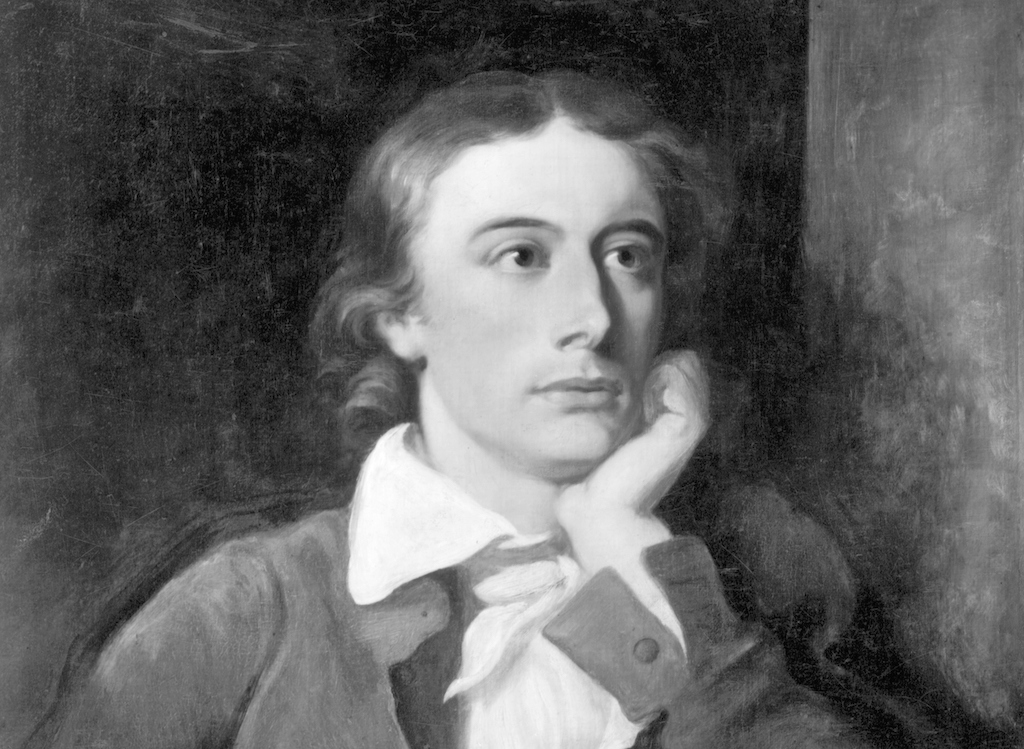By Katerina Taxiaropoulou,
Hampstead, May, 1819. The sun slowly goes down, casting its light upon the window glasses of the white village house. The peonies are in full bloom and a soft, sweet, musky scent fills the air. A spring evening. John Keats steps into the garden of Wentworth Place, home to his dear friend Charles Brown, who has invited him to stay as a lodger. After walking a loop around the house, the young poet sits beneath a plum tree and closes his eyes gently. Everything is still and quiet when…Hark! A nightingale lands on a tree branch above him, and starts its hypnotizing song.
“When he [Keats] came into the house, I perceived he had some scraps of paper in his hand, and these he was quietly thrusting behind the books. On inquiry, I found those scraps, four or five in number, contained his poetic feelings on the song of the nightingale”, accounts Brown (Bate). Within a single sitting, the length of about two or three hours, Keats had composed one of the greatest odes of all time, Ode to a Nightingale. Two months later, the poem was published in the magazine Annals of the Fine Arts, and later in 1820, it was included in Keats’s collection of poems Lamia, Isabella, The Eve of St Agnes, and Other Poems.
Ⅰ. Nature
“My heart aches, and a drowsy numbness pains
My sense, as though of hemlock I had drunk,
Or emptied some dull opiate to the drains
One minute past, and Lethe-wards had sunk:
‘Tis not through envy of thy happy lot,
But being too happy in thine happiness, —
That thou, light-winged Dryad of the trees
In some melodious plot
Of beechen green, and shadows numberless,
Singest of summer in full-throated ease.”
-John Keats, quote from Ode to a Nightingale
As one can read in the first stanza, Ode to a Nightingale opens with a somber tone. While generally in poetry, the poet is not identified with the speaker, in Romantic poetry, this is not the case. These poets’ personal life permeates their poetry like a drug permeates one’s bloodstream. John Keats writes Ode to a Nightingale, “just six months after” his brother’s death from tuberculosis (John Keats: Chronology). So, in a state of utter sadness, and like a true Romantic, he goes to Nature to seek consolation.

There, he listens to the nightingale, a creature of mythological proportions which, with its mesmerizing song, helps the poet separate himself from the real world of pains. While listening to the bird singing, he is “trying to escape into the realm of fancy”, like the Elysian fields, where there is only pleasure (The Odes of Keats). In the second stanza, Keats dreams of drinking vintage wine, tasting goddess Flora and dancing in the warm southern countryside. However, as much as he wants to remain in that state of pure pleasure forever, the poet is called to see the truth. As Earl Wasserman holds, “the core of the poem is the search for the mystery, the unsuccessful quest for light within its darkness” which can only drive one to “an increasing darkness” (The Finer Tone). When he finally exits the trance, Keats is left with a crushing awareness of human mortality.
Ⅱ. Sickness and Death
“Fade far away, dissolve, and quite forget
What thou among the leaves hast never known,
The weariness, the fever, and the fret
Here, where men sit and hear each other groan;
Where palsy shakes a few, sad, last gray hairs,
Where youth grows pale, and spectre-thin, and dies;
Where but to think is to be full of sorrow
And leaden-eyed despairs”
-John Keats, quote from Ode to a Nightingale
Before becoming a poet, John Keats had spent two years training as a surgeon at Guy’s Hospital, London. There, he attended to patients with progressive, often terminal, diseases. The scenes of suffering he witnessed in the hospital’s wards had an influence on his poetry, “not only because they equipped him with his distinct descriptions of physical disorder, but also because they brought him to a deeper understanding of a concurrent spiritual breakdown” (Healing with Sympathy and the Development of the Poet-Physician).

In the third stanza, Keats relates the physical symptoms of dying, that is weariness, fever, weight-loss and palsy, as well as the psychological effects of it, that is fear, despair and depression. According to Christopher Cerullo et al., the symptoms described and the sorrow over youth dying “is clearly in relation to Tom [Keats] and his premature death” (British Literature Wiki). The poet wishes to flee this painful memory, and so turns to the poetry of the senses to achieve this transport.
Ⅲ. Immortality
“Darkling I listen; and, for many a time
I have been half in love with easeful Death,
Call’d him soft names in many a mused rhyme,
To take into the air my quiet breath;
Now more than ever seems it rich to die,
To cease upon the midnight with no pain,
While thou art pouring forth thy soul abroad
In such an ecstasy!“
-John Keats, quote from Ode to a Nightingale
In the greatest part of the poem, there is a juxtaposition between Keats’s mortal nature and his desire to identify, become one with the nightingale, or, as he calls it, the “immortal Bird”. A complete union however is “impossible”, as the bird is “distant and mysterious” (Coleridge, Keats, and the Imagination). He is too closely connected with material earth and it is too closely aligned with the intangible sky. Through poetry, Keats is able to reach a compromise. Like the nightingale’s song, a poem lives on after its writer’s death. This time, poetry does not enable an imaginative escape from pain.

In the last stanza, the poet seems to accept his inevitable death. He lets go of fancy, recognizing its deceiving nature. Still however, he does not know where he stands. As the nightingale stops singing, Keats wonders:
“Was it a vision, or a waking dream?
Fled is that music: —Do I wake or sleep?”
-John Keats, quote from Ode to a Nightingale
This final couplet best exemplifies Keats’s notion of Negative Capability, that is the poet’s ability to be “in uncertainties, mysteries, doubts, without any irritable reaching after fact and reason” (Letters). Ode to a Nightingale closes with a question, that the poet does not strive to answer. The bird disappears and he is left sad and alone again. Yet now, he is not bare-handed. Like the bird’s song, the creative work he has produced is immortal.
References
- Ode to a Nightingale. sites.udel.edu. Available here
- Healing with Sympathy and the Development of the Poet-Physician in John Keats’s Endymion, Hyperion and The Fall of Hyperion. ikee.lib. auth. Available here
- The odes of John Keats. archive.org. Available here
- The finer tone: Keats’ major poems. archive.org. Available here
- Coleridge, Keats, and the Imagination: Romanticism and Adam’s Dream”. archive.org. Available here
- Maurice Buxton Forman. The Letters of John Keats. Read Books. UK. 2010.




